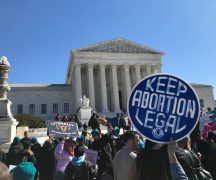As the coronavirus vaccine dribbles out far more slowly than promised, many of the people who can get it are refusing to do so.
Gov. Mike DeWine on Wednesday said that a whopping 60% of nursing home workers who have been offered the vaccine have refused it.
The news comes amid disappointing vaccination numbers across Ohio, which was told by the Trump administration that it would receive more than 530,000 doses of the vaccines by the end of December. Just 94,000 so far have been administered.
“I am not satisfied with where we are in Ohio,” DeWine said during a coronavirus press conference. “We’re not moving fast enough, but we’re going to get there.”
He said he had a Wednesday morning conference call with CEOs of Ohio hospital systems and set a goal of getting the covid vaccine into people’s arms within 24 hours of when hospitals receive it. DeWine said the job of distributing the vaccine is more complex than many appreciate, but it’s vital to do it quickly.
“There’s a moral imperative to get this out just as quickly as we can,” he said.
But the numbers emerging from nursing homes might portend something just as bad.
“Our bigger concern is the amount of staff who are not taking it,” DeWine said. “I don’t have data in front of me, but anecdotally, it looks like somewhere around 40% of staff at nursing homes are taking the vaccines and 60% are not taking it.”
Those figures are disturbing not only because of what they might say about attitudes toward the vaccines among the larger population. They also mean that most staffers will be unprotected as they move between the outside world and nursing homes filled with vulnerable people — some of whom will not be able to take the vaccine for medical reasons.
Even so, DeWine said he isn’t going to make anybody take it.
“I’m not going to compel anybody to do it, but I’m urging people to take that vaccine,” he said. “It’s very important,”
It’s not clear why the governor isn’t imposing such a requirement.
All 50 states have laws requiring — with exemptions — that children be vaccinated before going to school. Also, many healthcare facilities require employees to be vaccinated.
A DeWine spokesman didn’t immediately respond when asked why DeWine wouldn’t order Ohio nursing homes to follow suit.
Ohio’s problems distributing the coronavirus vaccine come amid national problems producing and distributing the two vaccines that so far have received approval. With hospital beds filling, the country is falling far short of the Trump administration’s promises.
The administration said that 20 million Americans would be vaccinated by the end of December, but so far, only 11.4 million doses have been sent to states and just 2.1 million people have received a first dose, the Washington Post reported Tuesday.
At the current pace, it will take 10 years to vaccinate enough Americans to achieve herd immunity, NBC reported.
Among those promising 20 million vaccinated Americans by the end of 2020 was U.S. Surgeon General Jerome Adams. He made the statement just 11 days ago in a press conference with DeWine.
Adams dismissed reports that vaccine doses were coming to states at substantially lower levels than promised as blips that are to be expected in such a complex project. He also scoffed at the need to invoke the Defense Production Act to scale up production of approved vaccines, saying the manufacturers were operating at full capacity.
Three days later, the New York Times reported that Pfizer, manufacturer of one of the vaccines, was close to a deal with the administration to use the Defense Production Act to obtain more of the materials to make it. Pfizer had been asking for such help since September, the story said.
***
Also from Ohio Capital Journal:
Commentary: Is $8.80 the right minimum wage for Ohio?
As the Ohio Capital Journal reported last week, Ohio’s minimum wage will rise to $8.80 per hour next month.
According to the United States Department of Labor, Ohio’s current minimum wage of $8.70 per hour is higher than most of its neighboring states. Indiana, Kentucky, and Pennsylvania all have minimum wages pegged to the federal minimum wage of $7.25 an hour. Meanwhile, West Virginia’s minimum wage is at about the same level as Ohio’s while Michigan’s is highest in the region at $9.65 per hour.
While the conventional economic wisdom for years was that minimum wage increases hurt low-wage employment, a 1993 study of New Jersey’s minimum wage increase in 1992 started to unravel this consensus. The study found that fast food restaurants in New Jersey saw no change in employment compared to restaurants in eastern Pennsylvania after the adoption of a minimum wage increase.
Why did this happen? This is what economists have been trying to figure out since. READ MORE
Death sentences, executions continue to fade in 2020
The numbers of death sentences, executions and public support for the death penalty continued to fall in 2020. And ironically, as it killed so many, the coronavirus pandemic slowed the death penalty even more, according to the Death Penalty Information Center’s annual report.
The center reported that the 17 executions carried out this year was the fewest since 1991, when 14 were executed. Even more striking, only 18 were sentenced to death in 2020, the fewest since 1973.
“The historically low numbers of death sentences and executions were unquestionably affected by court closures and public health concerns related to the coronavirus,” the Death Penalty Information Center report said. “But even before the pandemic struck, the death sentences and executions in the first quarter of the year had put the United States on pace for a sixth consecutive year of 50 or fewer new death sentences and 30 or fewer executions.” READ MORE





